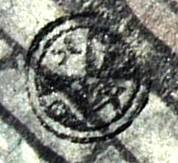
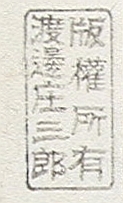
![]()
![]()

![]()
![]()
![]()
![]()

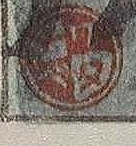
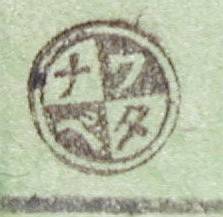
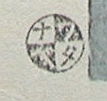
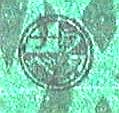
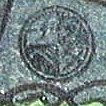

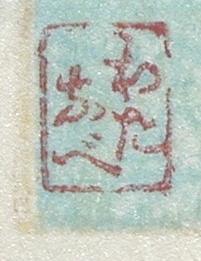
1
A
B
C
D
E
F
G
H
I
J
K
L
M
The following seals illustrated immediately below (designated "1" to "M) are typically encountered "publisher's seals" as were applied by Watanabe Publisher onto "shin-hanga" prints designed by artists such as Hasui, Koitsu, Kasamatsu, Koson and others. To the collector of such prints, a knowledge of these "seals" and the time periods in which each was used is useful in determining the age (and therefore rarity and value) of such prints.
|
|
|
|
|
|
|
|
|
|
|
|
|
|
|
|
1 |
A |
B |
C |
D |
E |
F |
G |
H |
I |
J |
K |
L |
M |
|
1 |
1918-1924 |
(6mm), PRE-earthquake version |
|
A |
1924-1930 |
"A" seal |
|
B |
1927-1932 |
"B" seal |
|
C |
1929-1942 |
"C" seal (so-called "Sausage Seal") |
|
D |
1931-1941 |
"D" seal |
|
E |
1932-1942 |
"E" seal |
|
F |
1934-1941 |
"F" seal |
|
G |
1942-1945 |
"G" seal
|
|
H/I |
ca. 1943-1947 |
These are not true "publisher's seals," but rather, the seals of the printer (Suri) Ono Gintaro, who was one of Watanabe's long term printers. During the years 1943-1947 his seal was sometimes placed on Hasui prints instead of the usual "publisher seal." Post-war versions of the "I"-seal are also known in conjunction with a "6mm" seal.
|
|
J |
1946-1957 |
"6mm" seal - (Actually measures 5.5 to 6.5mm, depending on version); reads "Wa-ta-na-be" (in Japanese "katakana"). Note--unlike most other "publisher's seals", this round seal is nearly always found WITHIN (and over-printed onto) the print's image (and is typically found near the print's lower right or left corner). The seal exists in both black and red impressions. Hand-applied, random placement. (See "Special Note" below.")
|
|
K |
1957-1989 |
"7mm" seal - Reads "Wa-ta-na-be" (in Japanese "katakana"). Again note--unlike most other "publisher's seals", this round seal is nearly always found WITHIN (and over-printed onto) the print's image (and is typically found near the print's lower right or left corner). Again, hand-applied, random placement.
|
|
L |
1989- |
The so-called "Heisei seal", normally seen in red (also grey version known), reads "Wa-ta-na-be" (this time, in Japanese "hiragana"). The nickname "Heisei seal" derives from this seal's first appearance at the end of Japan's Showa era (Showa era, 1926-89, ended with the death of emperor Hirohito in 1989) which also marked the beginning of the Japan's current "Heisei era" (1989 until present time).
|
|
M |
? |
"Gift seal", reads "Wa-ta-na-be" (this time, in Japanese "hiragana") |
Please note, prints by Ito Shinsui are an exception which do not follow these rules. In contrast to above said, his prints published by Watanabe rather carry the black round "6mm" seal instead the seals "A" through "G."
Special Note--"Missing" Watanabe Seals
Additional Watanabe Seals
|
|
|
|
|
|
9mm Seal 1916 |
Taisho Box Seal 1917 |
1927 Shunsen |
6mm block carved |
|
The wide "9mm seal" (reads "Wa-ta-na-be" in Japanese "katakana") can be found on Taisho era (1912-26) prints by Charles Bartlett and Takahashi Hiroaki. |
The "Taisho Box Seal" (reads "Wa-ta-na-be" in Japanese "hiragana") is seen on a 1917 print by Ito Shinsui. This seal should not be confused with the much later "Heisei seal" of almost identical shape. |
Several prints by Natori Shunsen bear the above shown seal "Watanabe ko." |
Some later "ukiyo-e" reproductions now carry a "block-cut" "6mm seal"; this means that the "seal" itself is actually carved INTO the print's "keyblock" rather than being applied (by hand) to the print at the end of the printing process. This "block-cut" seal does not then therefore necessarily indicate an early printing (that is, before 1957). |
Watanabe Publisher "Seals" Timeline
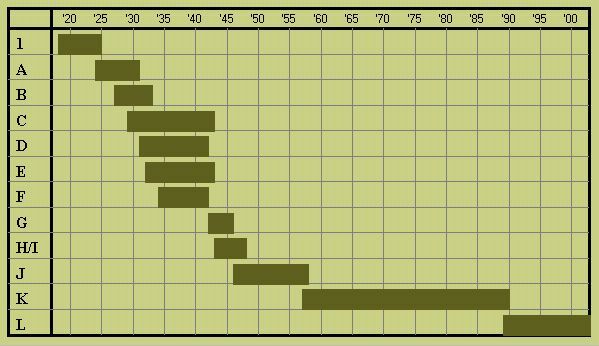
The above "timeline" graphically illustrates the periods of activity for the various printers employed
by Watanabe who are mentioned in this article.
(Timeline courtesy of our good friend, Marc Kahn, who runs a wonderfully informative website called Shotei.com.)
For further information on Watanabe Publisher seals see:
Pachter, Irwin J., Kawase Hasui and his Contemporaries: The Shin Hanga (New Print) Movement in Landscape Art (Everson Museum of Art, Syracuse, 1986).Kawase Hasui: Lyric Poetry in Taisho and Showa [Kawase Hasui: Jojoh no shi Taisho, Showa no fukei hanga (Yamanashi Prefecture Museum, Yamanashi, 1990).
(c) Andreas Grund and Thomas Crossland, 2002